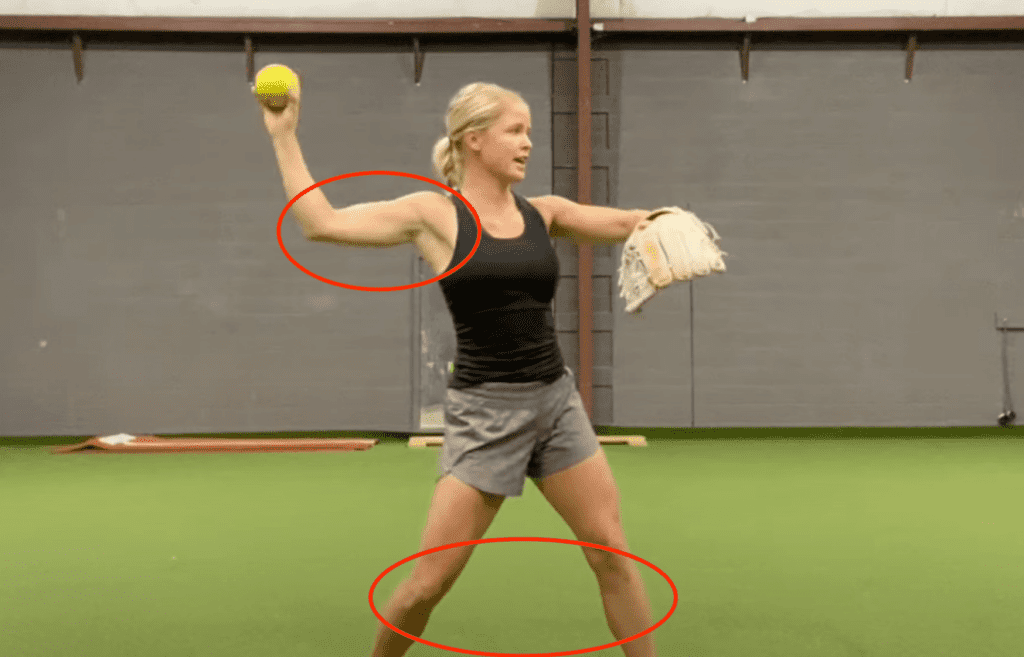Softball is a team sport that requires coordination, timing, and precision. While practicing with a team is important, practicing alone is essential to improve your individual skills. In this article, we will provide you with a guide on improving your softball skills by practicing drills by yourself.
Whether you’re a beginner or an experienced player, these drills will help you develop your hitting, fielding, and throwing skills. We will start by discussing the planning process and warm-up drills, followed by the top drills you can do at home by yourself.
After practice, we will also provide tips on relaxing your muscles and answer frequently asked questions about improving softball skills.
Before you begin
Make a plan for your drills
To make the most of your training session, it’s crucial to determine the specific goal you want to achieve and the duration of your practice. Depending on your experience level and fitness level, your practice session can range from 30 minutes to an hour or more. Make sure to allocate enough time for each drill and take breaks to avoid burnout.
In addition to the duration, choose a suitable space to practice. If you have access to an outdoor field or batting cage, that would be ideal. However, if you don’t have access to these facilities, you can also practice in your backyard, garage, or basement. Ensure the space is safe and free from any obstacles or hazards that may cause injury. Also, ensure you have all the necessary equipment, such as a bat, ball, cones, and a tee.
Warm-up to avoid injuries
Warming up is crucial to prepare your body for self-practice and prevent injuries. Here are two warm-up drills you can do at home before starting the softball drills to improve your pitching, batting, and catching skills:
Jogging
Start by jogging in place or around your practice area for 5-10 minutes. This will increase your heart rate and warm up your muscles.
Arm circles
Stand with your feet shoulder-width apart and your arms extended to the sides. Move your arms in circular motions, first clockwise and then counterclockwise. This will help loosen up your shoulder muscles and improve your arm mobility.
By doing these warm-up exercises, you can increase blood flow to your muscles, reduce the risk of injuries, and prepare your body for a productive self-practice session.
Softball drills to do by yourself at home
Wall throw drill
Gear you need: a ball, gloves (optional).
The wall throw drill is an effective way to improve your accuracy, arm strength, and throwing mechanics. To perform this drill, stand in front of a wall with your throwing arm raised and the ball in your throwing hand. Step forward with your non-throwing foot and shift your weight onto your back foot. Then, rotate your body and throw the ball against the wall with proper form, aiming for a specific target. Catch the ball as it bounces back and repeat for several repetitions. This drill can be done indoors or outdoors and requires minimal equipment.
Tips: You can level up your game with some of the best softball pitching machines reviewed.
The long tee drill (or the slap-hitting drill)
Gear you need: a ball, a bat, a batting tee, and a nest (optional).
The tee drill is a fundamental drill for improving your batting skills, hand-eye coordination, and timing. To perform this drill, set up a tee for your skill level at the appropriate height and distance. Take your stance and practice hitting balls off the tee with proper form, focusing on keeping your eye on the ball and using the correct swing mechanics. The tee drill allows you to repeat the same swing repeatedly, which can help you develop muscle memory and consistency in your swing. This drill can be done indoors or outdoors and requires minimal equipment.
To get the most out of this drill, it’s important to use proper form and technique. Check out this video from coach and former player Natasha Watley demonstrating the tee drill.
In the video, she emphasizes the importance of balancing your weight, using a short and compact swing, and following through with your swing. Practicing this drill regularly can improve your ability to make solid contact with the ball, hit with power, and maintain consistency in your swing.
Ground ball pickup drill
Gear you need: a ball, gloves, and cleats.
The ground ball pickup drill is essential for improving your fielding skills, footwork, and hand-eye coordination. To perform this drill, roll or toss the ball on the ground and practice fielding it properly. Focus on getting in front of the ball, keeping your glove down, and using proper footwork to approach the ball.
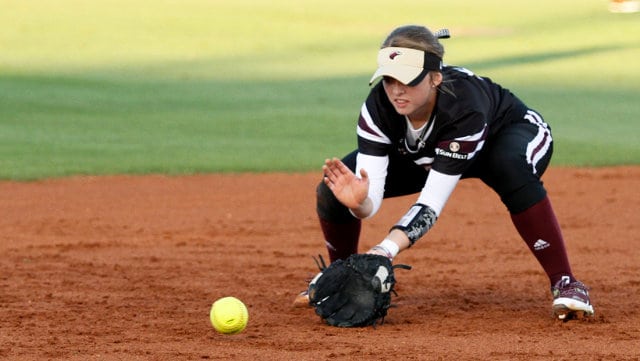
This drill can be done indoors or outdoors and requires minimal equipment. Consistent practice of this drill can help build muscle memory and improve reaction time.
Solo fielding drill
Gear you need: a ball, gloves, a bat, and cleats.
The solo fielding drill is an effective way to practice fielding grounders or pop-ups by yourself. To perform this drill, stand in front of a wall or use a rebounder and practice fielding the ball with proper technique. Focus on getting in front of the ball, keeping your glove down, and using adequate footwork to approach the ball. This drill can help you improve your fielding skills and reaction time, as well as your ability to anticipate where the ball will go. Check out this video from coach and former player Amanda Scarborough demonstrating the solo fielding drill.
Soft toss drill
Gear you need: a ball, a bat, a soft toss machine (optional)
The soft toss drill is an effective way to practice hitting with proper form and technique. Although it is best to have a friend toss the ball for you, it isn’t a must. You can also use a toss machine.
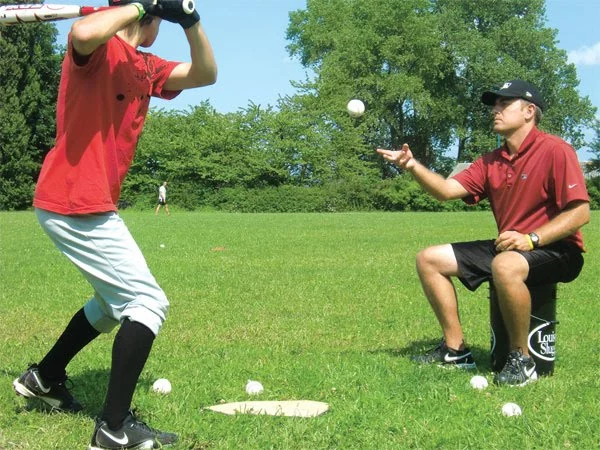
To perform this drill, use a soft toss machine or have a friend or family member toss the ball to you, and practice hitting it with proper form. Focus on keeping your eye on the ball, using adequate swing mechanics, and following through with your swing. This drill can help you improve your batting skills, hand-eye coordination, and timing.
To get the most out of this drill, it’s essential to use proper form and technique. Focus on keeping your weight balanced, using a short and compact swing, and following through with your swing. This drill can be done indoors or outdoors and requires minimal equipment.
Practicing the soft toss drill regularly can improve your ability to make solid contact with the ball, hit with power, and maintain consistency in your swing. It’s a great way to build your batting skills, whether a beginner or an experienced player.
Backhand drill
Gear you need: a ball and gloves
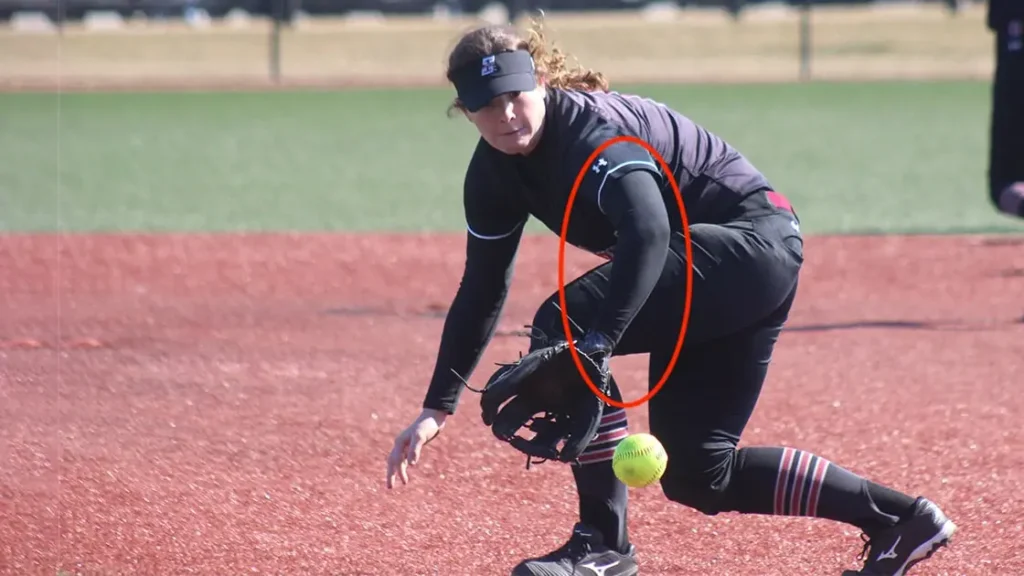
The backhand drill is a great way to practice fielding backhand grounders properly. Stand facing a wall or rebounder to perform this drill and practice fielding backhand grounders with proper technique. Focus on getting in front of the ball, keeping your glove down, and using proper footwork to approach the ball. This drill can help you improve your fielding skills and reaction time.
Keep your glove low and your eyes on the ball as it approaches. Use appropriate footwork to position yourself in front of the ball and field it cleanly. This drill can be done indoors or outdoors and requires minimal equipment.
Check out this video from the MegRem Softball channel demonstrating the backhand drill. In the video, she demonstrates how to position your body and glove to field backhand grounders properly. She also emphasizes the importance of keeping your glove low and using proper footwork to approach the ball.
Practicing the backhand drill regularly can improve your ability to field backhand grounders with confidence and consistency. This drill is handy for infielders but can benefit players looking to improve their fielding skills. You can become a more well-rounded and influential player on the field with proper technique and consistent practice.
Shadow pitching drill
Gear you need: nothing but a mirror or a camera
The shadow pitching drill is an excellent way to practice your pitching motion without a ball. This drill is beneficial for working on proper pitching mechanics, balance, and follow-through. To perform this drill, stand before a mirror or video camera and practice your pitching motion with good form and technique. Focus on using adequate footwork, arm motion, and follow-through. This drill can help you improve your pitching skills and muscle memory.
The shadow pitching drill can be particularly beneficial for identifying and correcting any flaws or inconsistencies in your pitching motion. By practicing this drill regularly, you can improve your pitching mechanics and build muscle memory, which can help you pitch more accurately, consistently, and efficiently.
Incorporating the shadow pitching drill into your regular practice routine can help you develop proper mechanics and build the muscle memory needed to pitch effectively. By focusing on the critical components of this drill and practicing with proper form, you can become a more skilled and effective pitcher on the field.
Forehand drill
Gear you need: a ball and gloves
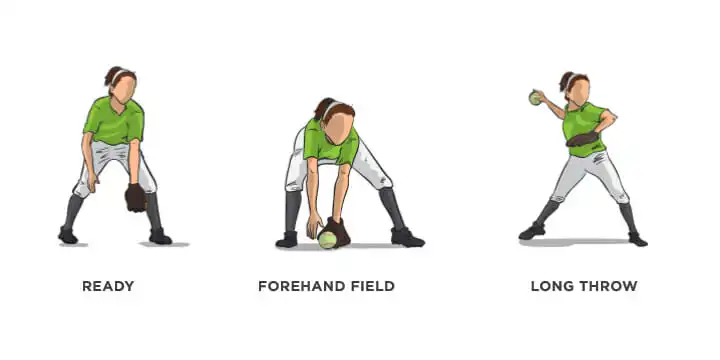
The forehand drill is essential for improving your fielding skills, footwork, and hand-eye coordination. Stand facing a wall or rebounder to perform this drill and practice fielding forehand grounders with proper technique. Focus on getting in front of the ball, keeping your glove down, and using adequate footwork to approach the ball. This drill can help you improve your fielding skills and reaction time.
To get the most out of this drill, it’s essential to use proper form and technique. Keep your glove low and your eyes on the ball as it approaches. Use appropriate footwork to position yourself in front of the ball and field it cleanly. This drill can be done indoors or outdoors and requires minimal equipment.
Cone drill
Gear you need: cones or markers
The cone drill is a versatile and challenging drill that can be done at home as a part of self-practice. This drill can help improve your footwork, agility, and overall athleticism, making it useful for pitchers and fielders.
To perform this drill, set up a series of cones or other markers and practice moving between them quickly and efficiently, focusing on proper footwork and agility.
Incorporating the cone drill into your regular practice routine can significantly boost your performance on the field. Many variations of the cone drill can be tailored to your specific needs and skill level. You can find a variety of cone drill variations online to try at home as a part of your self-practice routine.
The cone drill can help you become a more well-rounded and effective player with consistent practice. It’s an excellent drill to incorporate into your regular routine, whether you’re practicing at home or in a team setting.
Post Practice: Important things to do after drills
Stretch your muscles
After completing your softball drills, it’s important to take some time to relax and stretch your muscles. This can help to prevent injury and promote muscle recovery. Spend some time doing gentle stretches to help release muscle tension, focusing on areas that may feel tight or sore. Try using a foam roller or massage ball to target specific body areas.
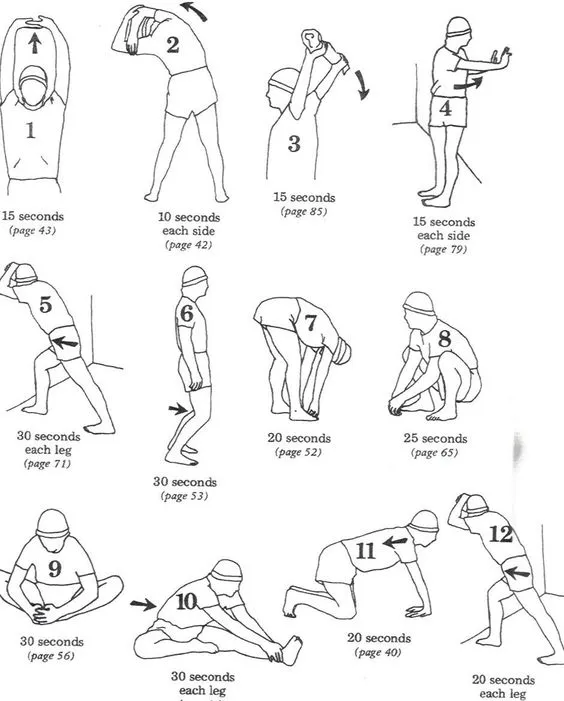
Drink water and have a snack
In addition to stretching, hydrate and refuel your body after your practice session. Drink plenty of water and eat a healthy snack or meal to help replenish your energy levels. Taking care of your body post-practice can help ensure you’re ready for your next practice or game.
FAQ
How can I improve my softball skills?
A: There are many ways to improve your softball skills, including regularly practicing, watching, and learning from other players, and seeking feedback and guidance from coaches. Incorporating a variety of drills into your practice routine, focusing on proper form and technique, and setting achievable goals can help improve your skills. You can also try practicing at home as a part of self-practice, using drills focusing on improving your pitching, batting, or catching skills.
Can I do softball drills ONLY by myself?
A: Yes, you can absolutely do softball drills by yourself as a part of self-practice. Many drills can be done at home or in a limited space, such as wall throw or shadow pitching drills. However, practicing with a partner or team is essential to simulate game-like scenarios and work on specific skills, such as fielding or base running.
How often should I be practicing softball drills at home?
A: The frequency of your at-home practice will depend on your personal goals and schedule. However, incorporating regular self-practice sessions into your routine can help to improve your skills and build muscle memory. Try setting aside time each week to practice drills focusing on improving your pitching, batting, or catching skills. You can also use video analysis tools or seek feedback from coaches or other players to help identify areas of improvement and track your progress over time.
Conclusion
Incorporating softball drills into your regular practice routine can greatly improve your skills, whether at home or in a team setting. With various drills that focus on improving your pitching, batting, and catching skills, you can work on specific areas of your game and build your overall performance on the field.
Remember to take care of your body post-practice with gentle stretches, hydration, and refueling. And remember to seek feedback and guidance from coaches or other players to help identify areas of improvement and track your progress over time.
With consistent practice and a dedication to improving your skills, you can become a more confident and booming softball player.
Norman Dang is a diehard softball fan with full of energy and enthusiasm. He has over ten years of experience in playing softball and coaching softball for kids. He shares his expertise on the SoftballTriple blog.


